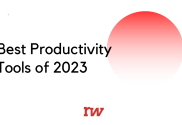
7 Trust-Building Tips for Leaders and Teams
Trust is essential for a productive and thriving workplace. Employees do better when they have faith in the company and the leaders they work to support. Building confidence inside organizations comes primarily from more minor actions that build up over time. This increased faith leads to more employee collaboration, empowers decision-making, and increases loyalty to the company.
Trust-building results are hard to ignore, especially when comparing low-trust and high-trust companies. Employees at the high-level report 74% less stress, 50% higher productivity, a 29% increase in satisfaction, and 40% less burnout. Trust has to be earned in most relationships, and the business world is no different. Here are seven trust-building tips that leaders and teams can implement in their day-to-day workflow.
1. Stay True to the Four Cs
Competence, commitment, consistency, and caring are the four elements associated with creating trust. In the case of competence, employees should expect to work for someone who knows what they’re doing. A lack of faith in an employer could cause workers to lose confidence in the company as a whole. It might also make the organization’s mission statement unclear, leading to inferior results and subpar productivity.
As for commitment, the staff is more likely to be motivated if they see their leaders dedicated to the cause. They are also more likely to stick around for the long haul, which leads to higher retention rates. With consistency, employees count on a boss to show up and lead, regardless of the circumstances. Consistency helps people know what to expect and eliminates the chances of unforeseen hurdles. This dependability allows employees to plan better and stress less about unnecessary chaos.
In terms of caring, people need to feel like they matter in the workplace. They want leaders who care about the organization and its people. That’s just one reason why benefit packages are so important. They communicate that a company cares for its employees. If you are a leader who breaks any of these guidelines, be upfront and honest with employees. Acknowledging your mistakes is another way to cultivate and build trust.
2. Always be Clear and Direct
Unclear instructions and feedback from leaders can significantly erode trust over time. Your staff wants leaders who practice proper communication skills. An employee could easily become stressed if they don’t have thoughtful and detailed instructions to follow. Don’t let the fear of micromanaging dissuade you from being hands-on if needed. It is your duty as a leader to set clear expectations and guidelines for your team.
Best-selling author and researcher Brene Brown’s quote, “clear is kind, unclear is unkind,” resonates in many areas, including work. For workplace projects, clear looks like painting a picture of what’s done will look like in the end. Before your team gets started, detail what guidelines need to be hit for a task to be checked off. This keeps everyone on the same page and contributes to a higher quality of work.
3. Don’t Shy Away From Hard Conversations
Half of the managers cite difficult conversations as their biggest challenge as a leader. The need for navigating tough topics remains a reality, whether addressed by employers or not. Holding these conversations is a skill set that includes emotional intelligence, attention to detail, and an open mind. As a leader, you shouldn’t shy away from these important conversations just because they might be uncomfortable or difficult.
Employees respect a boss that isn’t afraid to take on challenging discussions and issues, especially in today’s world. This type of leadership sets an example that others will want to follow. Avoiding these talks could subconsciously lead staff members to disrespect and lose trust in company leadership. Hard conversations are likely to come up amongst employees as well. If you and a member of your team need to talk things through, don’t be afraid to ask for help. Ask for support from a manager if you need it.
4. Be Intentional About Feedback
Regular feedback allows workers to possess a better understanding of their job performance and goals. Employees will know what they should keep doing and what approaches might need some alterations. Whether the feedback is positive or negative, it is imperative to be intentional with these conversations. Add your feedback to your Zoom Calendar before your Zoom meetings so you won’t forget. Looking for opportunities to praise employees nurtures a sense of trust and fulfillment.
Be constructive and straightforward if you’re discussing where an employee has room for improvement. These conversations don’t have to come with a sense of negativity. As long as leaders are respectful, a good employee will usually welcome the chance to work toward improvement. In addition, staff can build confidence in their leaders when they feel cared for and respected.
5. Take an Interest in the Mental Health of Employees
Leaders should take a genuine interest in the mental health of their employees. Showing care begins by promoting a healthy work-life balance for all staff. Managers can set an example in their own habits and hope the rest of the team will follow suit. Burnout employees significantly hinder productivity. Approximately 75% of companies struggle with overwhelmed employees. These conditions affect overall job performance and the well-being of workers.
Employers should help spread awareness about the importance of mental health. Awareness includes organizing support groups for employees and cultivating a healthy work environment. It also means treating each and every employee with respect. Companies are encouraged to review their health insurance policies to ensure they properly cover mental health services. These resources enable employees to seek help from a mental health professional if needed more easily.
6. Nurture an Environment of Open Communication
Leaders should strive to create an environment where everyone feels comfortable making their voices heard. Nurturing a supportive workplace is essential to an employee’s mental health. Workers feeling safe and supported can boost productivity and a sense of trust. This supportive atmosphere should extend through all areas of the workplace, including meetings and one-on-one conversations.
Studies suggest that workers expect open communication and transparency from their leaders. Effective managers communicate with employees in several different ways. This could include listening to any suggestions or concerns and encouraging questions, and open feedback. Overall, it boils down to how comfortable and supported an employee feels at the office.
7. Identify Support Systems
Employees should know where they need to go for support when they want it. Support systems could come in the form of a designated team member or a reliable project management system. Ensuring these systems are strong and effective can significantly strengthen trust in the organizations over time.
A designated member of human resources assigned to each team can be a form of direct support. Building community connections is another way a business can thrive and make everyone feel supported. This is especially crucial if your team is remote. A company might also utilize productivity software to get their teams connected in a seamless way.
Leading by Example Builds Trust
Trust is at the center of all good relationships inside and outside the workplace. Leaders who consistently cultivate trust in small and big ways are likely to see better results from staff. Companies nurture a more driven workforce when they care about the mental health of their employees and lead by example. Consistency is also vital to a thriving office environment. Trust in leaders takes a significant hit when promises are made but not kept.
Managers shouldn’t shy away from tough conversations and work to cultivate an environment where everyone feels safe to speak up. In addition, employees that feel supported are more likely to stick with a job for the long run. All these factors help build a solid foundation of trust that sets a company up for success.
Published First on Calendar. Read Here.
Featured Image Credit: Photo by Dio Hasbi Saniskoro; Pexels; Thank you!





